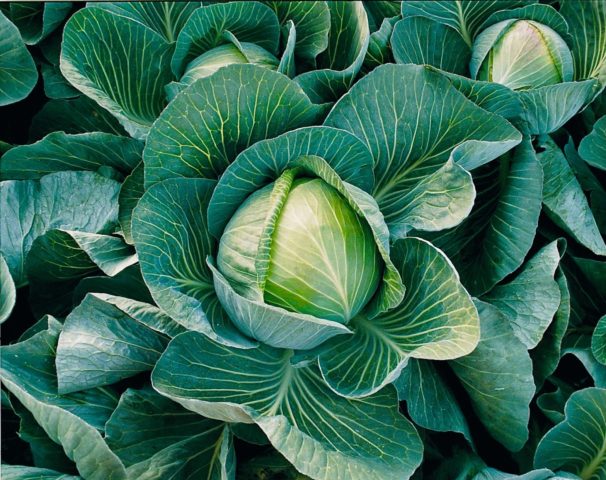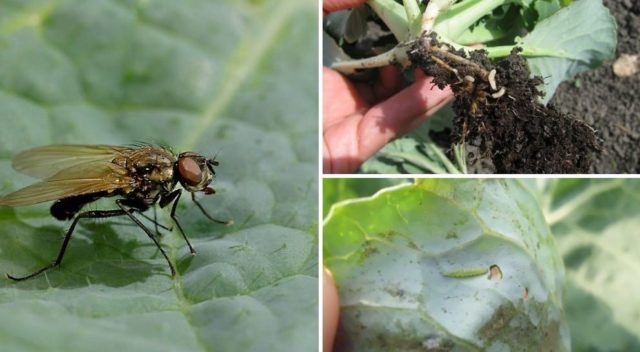Content
Hurricane cabbage is a popular white-headed variety of Dutch selection, adapted to the climatic conditions of Russia. Suitable for growing in open and closed ground, both in private and in farms. Most often grown on an industrial scale.

The Hurricane F1 is a popular, highly productive, flexible, versatile hybrid
Description of Hurricane cabbage
Hurricane F1 is a mid-season hybrid of white cabbage. The ripening period is 96-100 days. Heads of cabbage are formed from tight-fitting leaf plates. They have a rounded shape and a small stump. The leaves are painted light green with a slight waxy bloom. The veins are quite clearly visible on the foliage. In the context of the head of cabbage is white. The average weight of mature heads is 2.5-4.8 kg.

The outer foliage is darker in color.
Advantages and disadvantages
Hurricane cabbage is one of the most popular hybrids among gardeners due to its large number of positive qualities.
Some of the main advantages of the variety are:
- high productivity;
- excellent taste;
- versatility of application;
- unpretentious care;
- the ability to adapt to any climatic conditions;
- long shelf life (up to 7 months);
- heads of cabbage do not crack when overripe;
- resistance to heat and drought;
- immunity to many diseases, in particular to fusarium wilting and flowering;
- excellent transportability (heads of cabbage do not lose their presentation during long-term transportation).
Disadvantages of Hurricane F1 cabbage:
- needs additional treatment with insecticides and herbicides;
- with a lack of moisture, yield decreases.
Yield
Hurricane cabbage is a high-yielding cabbage. The average yield per hectare is 500-800 centners. With proper care from 1 m2 about 8-9 kg of cabbage can be harvested.
Planting and caring for Hurricane cabbage
Hurricane F1 is a cold-resistant variety that allows sowing seeds directly into open ground. But, despite this, the cultivation of this garden crop by direct sowing into the soil is recommended only in the southern climatic regions. In areas with an unstable climate, it is best to grow Hurricane cabbage using seedlings.
Ready seedlings are planted in open ground in mid-May. In this case, the seedling must have at least 4 leaves and be 15-20 cm high. 3 weeks after planting, the seedlings must be spud. After 10 days, the hilling procedure is recommended to be repeated.
The Hurricane hybrid prefers nutritious soil, so the beds intended for planting should be fertilized with organic matter in the fall. Top dressing with mineral fertilizers should be carried out only when the composition of the soil is known. Hurricane cabbage does not do well on soils with an excess of nitrogen.
It is quite easy to care for a hybrid, since mature plants have a powerful and strong root system. The main thing is to water the plantings in a timely manner, carry out top dressing (3 times per season), loosen the soil and remove weeds. Hurricane cabbage tolerates a lack of moisture easily, but the yield is significantly reduced, because the heads of cabbage will be of medium or small size.

The density of planting plants is 40-45 thousand pieces. per 1 ha
Diseases and pests
Hybrid crops are resistant to disease, so Hurricane cabbage does not need protective treatment. But it is necessary to protect the crop from pests with the help of insecticides. Processing is carried out immediately after planting seedlings in the ground or after 7-14 days.
The following pests pose a threat to Hurricane cabbage:
- Cabbage fly laying eggs on the bottom of plants.
In order to protect against cabbage flies, seedlings should be spud up to the first lower leaves.
- Cabbage whitefish.
As a protection against the caterpillars of the cabbage white, you can use ash, which must be sprinkled on the beds.
Application
The Hurricane F1 is a versatile hybrid. Suitable for fresh consumption, and for the preparation of various dishes, and for fermentation. Cabbage heads are stored for a rather long time, which allows you to use delicious and vitamin-rich salads all winter.
Conclusion
Harrcane cabbage is a well-proven variety that is especially popular with farmers. The hybrid is appreciated for its excellent taste, good yield, high growth rates and yield of marketable products in all weather conditions.










